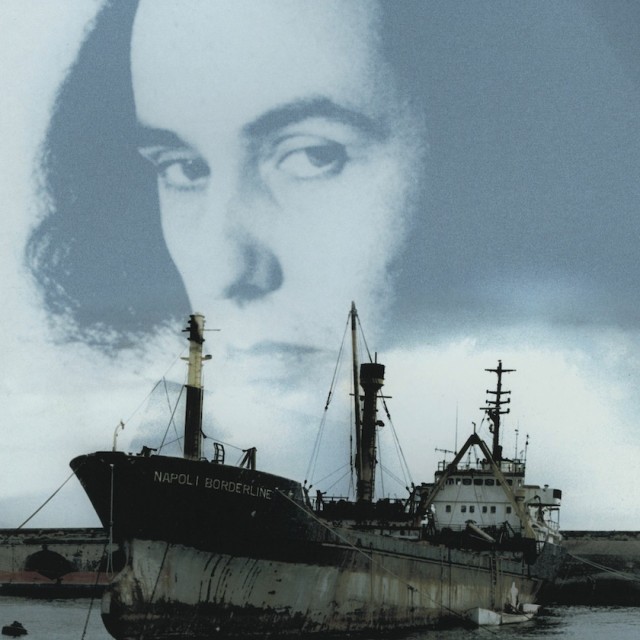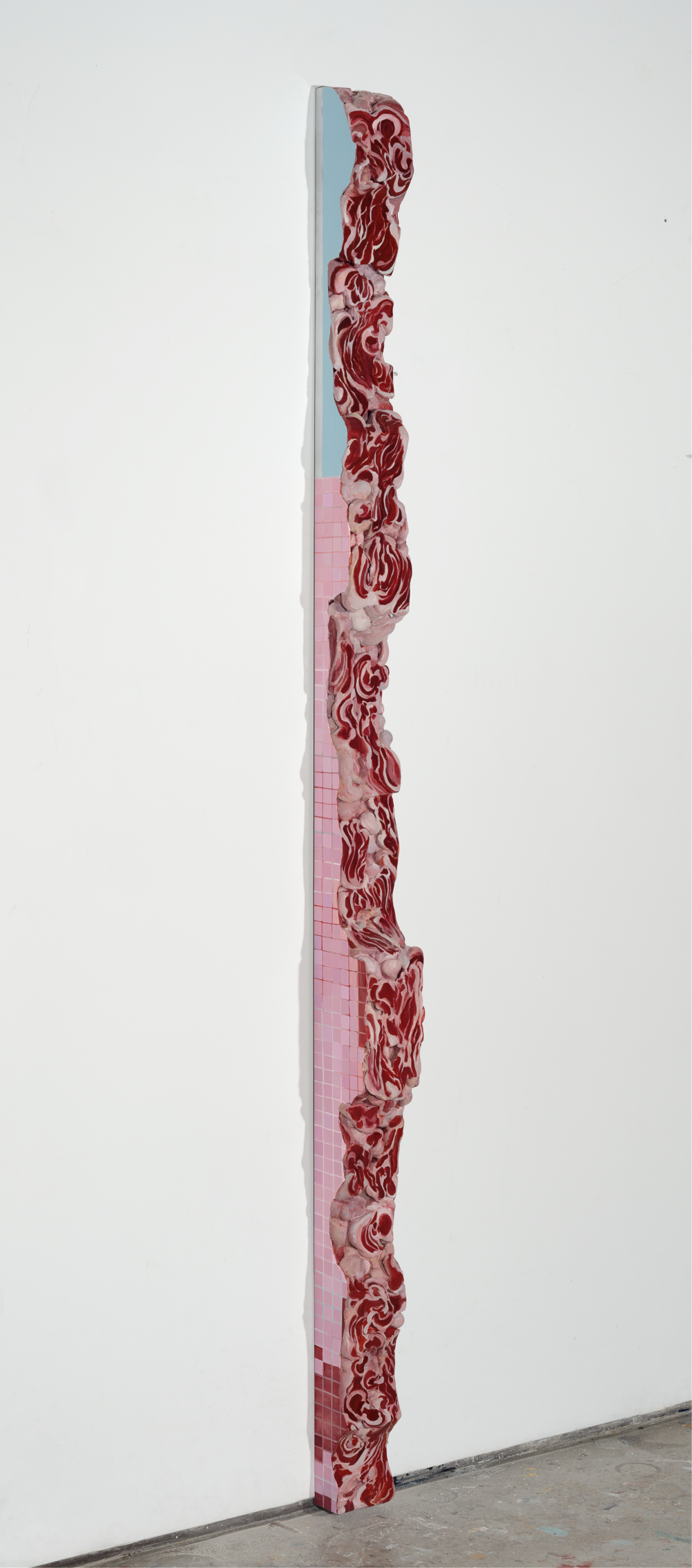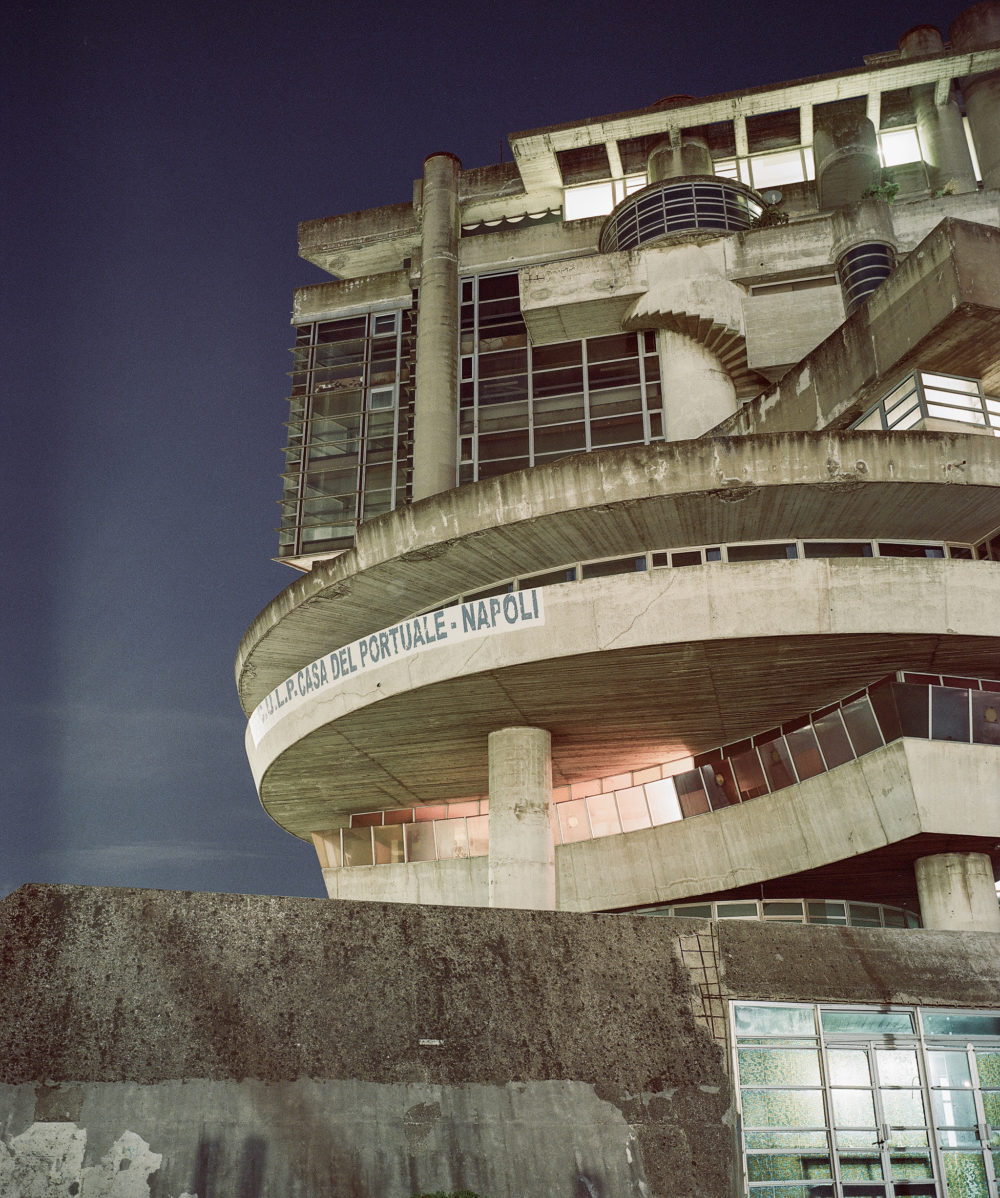The Madre museum, from December 20, 2013, to March 24, 2014, will host the first retrospective and the most complete for its breadth and completeness of the work, ever dedicated to one of the most important Italian contemporary artists, Vettor Pisani (Bari, 1934-Rome, 2011).
The namesake of a Venetian fourteenth-century naval commander, Vettor Pisani, whose father’s family was originally from Ischia, he loved to relate that he was the son of a naval officer and a striptease dancer: starting from this biography, part fact and part fiction, artfully rewritten, Vettor Pisani appears as a unique figure. With his first solo exhibition in 1970 at the Galleria La Salita in Rome (Male, Female and Androgynous – Incest and Cannibalism in Marcel Duchamp), and then with his participation in some of the most important exhibitions of the 1970s, including Vitality of the Negative in Italian Art 1960-70 (1970), Documenta V (1972), Contemporanea (1973-1974), International Performance Week at the Galleria d’Arte Moderna di Bologna (1977) and eight participations in the Venice Biennale starting from 1972, Vettor Pisani gradually revealed himself as one of the most important witnesses and exponents of artistic research in Italy from the ‘70s, as well as one of the most personal and visionary authors on the art scene of his generation. In the formulation of linguistic and aesthetic provocations and the exploration of expressive modes, his work has proved rich in meaning for subsequent generations. His figure appears to us today radically contemporary, that of a true precursor who successfully combined conceptual investigation with irony, the play of language with role playing, masking with the search for truth, major history with the chronicle of the trivial, the sacred with the profane, the art of the past with provocations of the present.
All Vettor Pisani’s works are sited systematically not only beyond the boundaries that divide disciplines such as art, literature, theater, music, architecture, philosophy, poetry, science (including the occult sciences), from each other, but even beyond the idea of the artist as a singular and unified figure, as exemplarily shown by the reference, constituting the artist’s poetic, to symbolic figures such as Marcel Duchamp, Yves Klein, Joseph Beuys or the extended collaboration-identification between the artist and Michelangelo Pistoletto on the Plagio project (begun by Pisani, after participating in 1970, at Pistoletto’s invitation, in the exhibition curated by Achille Bonito Oliva Amore mio), or, again, by his relationship with artists such as Alighiero Boetti and Gino De Dominicis.
Studded with triangles, circles and semi-crosses, mirrors and tables, labyrinths and pyramids, pavilions and architectural models, alembics and hourglasses, pianos and violins juxtaposed with busts, mannequins, casts, fusions of religious figures like Christ, the Virgin, the angels, or pictures of Oedipus and the Sphinx or Arnold Böcklin’s Island of the Dead, and populated by a veritable personal bestiary (turtles, rabbits, chickens, monkeys, goldfish, snails, guinea pigs, cats, peacocks, eagles and pigeons), the works of Vettor Pisani are imaginary theatres of memory and knowledge, philosophical and cognitive representations “of the history of modern Europe” and its contradictions, ephemeral scenographies of moral issues and intellectual questions as unavoidable as they are insoluble, forms of introduction to the complexity of speculation expressed through the ordinariness of everyday life, space-time thresholds between different eras, codes of communication between opposing states or entities (hero and antihero; human and divine; human and animal; man and woman; life and death) and, finally, provisional museums of the inevitable destruction and constant reconstruction of art, in which the kaleidoscopic variety of the artist’s artefacts and references, the dimensions of history and myth, gender, the different cultural traditions and identities of the artist all come together in a unicum, indefinable in its critical status and aesthetic consistency.
Engaged in the identification and reconnaissance of an ideal cohesion between thought, action and work through the constant and varied adoption of devices of staging performative and narrative, Vettor Pisani developed his research in seamless continuity between the different works, almost configuring his whole output (in which previous works are often reused to create new ones) as a single work of art in constant metamorphosis, a mighty spectacular staging, an encyclopedic theory/practice of thinking/doing art as difficult to define in a linear fashion as it is exciting to retrace in the return to his labyrinthine inspiring nuclei. Pisani’s output has some of its most significant achievements in the many versions of RC Theatrum (a veritable Rosicrucian Theatre presented for the first time at the 1976 Venice Biennale and then resubmitted and extended over the years in various versions, including The Theatre of Oedipus, The Theatre of the Virgin, The Azure Island, The Theatre of the Sphinx, The Theatre of Artists and Animals, The Crystal Theatre, Virginia with the Goldfish), in cycles devoted to the islands of Capri and Ischia and “Napoli Borderline,” in political works that have as their focus the themes of Judaism, Nazism, the compromised European identity (dealing also with the issue of migrants), and in the design of the Virginia Art Theatrum / Museum of Catastrophe, a work produced from 1995 to 2006 in a disused travertine quarry at Serre di Rapolano, Siena, configured as the culmination of all his research: dwelling, philosopher’s stone, opus which condenses his idea of art itself. These are projects and works that will all be reconstructed, reordered and documented in the exhibition.
In all these works and projects, art history, politics, psychoanalysis, popular culture, everyday news, hermetic philosophies, Masonic symbols, alchemical rituals and Rosicrucian doctrine inextricably overlap, often in ways that are oddly dissonant or even ironic and often self-deprecating, yet paradoxically always coherent in creating a sense and a world of his own: that tertium that was a work of art for Vettor Pisani, the only space-time, synesthetic and self-reflective, in which art can be conceived at the same time as a critical act and visionary impulse, giving rise on the one hand to an “art-criticism” which nurtures, quotes, comments, reflects and “strikes art by using art” (M. Calvesi), and on the other to an “art that enables us to see the unsayable,” as the artist himself wrote, or that reveals the repressed in the psyche and history, probes the depths of the meanings of things and makes visible the invisible (the ideas of the philosophers, the visions of the mystics, the illusions of the theatre, the fictions of writing, the dreams, like the nightmares, of our brains). This critical-visionary status was defined over the years in close collaboration between the artist and his wife Mimma Pisani, a participating exegete, configured as the common script of a theatrical performance in several episodes, as a continuous and joint declaration of poetic and fabulation and, finally, as a path of life. In the all-encompassing, but often amused exploration of the “secret (hidden) meaning of reality, art and culture” Vettor Pisani combined the reference to the semantic figure and the fate of both the hero and the anti-hero (recurrent terms in the titles of his works and writings, as in the critical literature dedicated to him), then configuring the artist as an interpreter, deliberately tragicomic, of the self as historical Western subject adrift, whose fragmentary identity becomes a metaphor for a modernity perverted into post-modernity and the contemporary cacophony, which, if it has lost the centrality of being, the essence of knowledge and the imprint of the human itself (not to mention the absurdity of art and its system, which Pisani undoubtedly progressively distanced himself from), remains pervaded by a regenerating yearning and an irrepressible eagerness for meaning, unity, the absolute, a return to the imaginary as the only possible source of reaction and inspiration.
Offering an in-depth vision of the principal aspects of this research, at the same time broad and deeply complex, stratified in time and articulated in expressive media adopted, the exhibition – curated by Andrea Viliani and Eugenio Viola and under the scientific supervision of Laura Cherubini – is the most comprehensive to date to deal with the artist. It brings together the most substantial group of works, both historical and recent, ever united in a single exhibition on the artist, enabling visitors to trace his whole output, from site-specific installations to drawings and collages, from paintings on canvas and PVC to performative actions, from photographic and filmic images to works in mixed media, with an essential endowment of documentary materials. At the conclusion of the exhibition, in 2014, the Madre will produce a major monographic bilingual publication (Italian/ English), to be issued by Electa, which will include, among other things, an extensive critical apparatus, bio-bibliography and illustrations including color images and entries exploring all the nuclei of the works presented, a series of unpublished essays, a vast anthology of historical texts and critical dictionaries-entries.
Retracing the biography of the artist, whose origins and formation in Bari are thoroughly investigated, a second exhibition will be presented, in the early months of 2014, at the Teatro Margherita in Bari (the artist’s birthplace). Designed specifically for the spaces of the Teatro Margherita and organized in collaboration between the Donnaregina Foundation and the City of Bari, the exhibition will bring together works and documents from the 1970s (including documentation of the personal exhibition of the artist at the Castello Svevo in Bari in 1970, which won the Premio Nazionale Pino Pascali, assigned by the Galleria Nazionale d’Arte Moderna in Rome), down to his most recent production, in which the element of staging will be the unifying thread running through an installation that, retracing the main paths of Vettor Pisani’s research, will at the same time evoke the nature and the original function of the exhibition spaces of the Teatro Margherita.
Vettor Pisani was born in Bari in 1934 (although the artist, recalling the origins of his family, stated on several occasions that he was born in Ischia or Naples), and died in Rome in 2011.
Vettor Pisani has had solo exhibitions devoted to his work by institutions such as the Galleria Nazionale d’Arte Moderna, Rome (exhibition at the Castello Svevo, Bari, as the winner of the Premio Nazionale Pino Pascali) in 1970, the Museum Folkwang in Essen in 1982, the Provincial Council of Valencia in 1990, in 1992 by the Galleria Civica d’Arte Contemporanea of Trento, in 2011 by the Fondazione Morra-Palazzo Ruffo di Bagnara, Naples, and in 2012, a few months after the artist’s death, by the MACRO in Rome. Pisani has participated in numerous exhibitions and biennials which include, in addition to Documenta V, Kassel, in 1972, the Venice Biennale (1972, 1976, 1978, 1984, 1986, 1990 1993, 1995), the Rome Quadrenniale (1973, 1986, 1992), the XV Bienal, São Paulo (1979) and the Nouvelle Biennale de Paris, Paris (1973, 1985). The exhibitions in which he participated include: Amore mio, Palazzo Ricci, Montepulciano (1970); Vitalità del negativo nell’arte italiana 1960-70, Palazzo delle Esposizioni, Rome (1970); Contemporanea, Parcheggio di Villa Borghese, Rome (1973- 1974); Italy Two. Art Around ’70, Museum of the Civic Center, Philadelphia (1973); Rencontre internationale ouverte de vidéo, Espace Pierre Cardin, Paris (1975); Arte e critica 1980, Galleria nazionale d’arte moderna, Rome (1980); Through the Looking Glass, Palazzo delle Esposizioni, Rome, (1980); Linee della ricerca artistica in Italia 1960- 1980, Palazzo delle Esposizioni, Rome (1981); Avanguardia/Transavanguardia 68-77, Rome (1982); Italian Art Now: an American Perspective, Solomon R. Guggenheim Museum, New York (1982); Arte Italiana 1960-1982, Hayward Gallery, London (1982); Nell’Arte. Artisti italiani e francesi a Villa Medici, Accademia di Francia, Rome (1983); Der Traum des Orpheus: Mythologie in der italienischen Gegenwartskunst, 1967-1984, Städtische Galerie im Lenbachhaus, Munich (1984); L’Italie aujourd’hui: Regards sur la peinture italienne de 1970 à 1985, Centre national d’Art contemporaine-Villa Arson, Nizza (1985); Terrae Motus e Terrae Motus 2 at Villa Campolieto, Ercolano, in 1986, and at the Grand Palais, Paris, in 1987; Beuys zu Ehren, Städtische Galerie im Lenbachhaus, Munich (1986); Emerging Artists 1978-1986: Selections from the Exxon Series, Solomon R. Guggenheim Museum, New York (1987); Mythos Italien, Bayerische Staatsgemaeldesammlungen, Munich (1988); Open Mind (Gesloten Circuits), Museum van Hedendaagse Kunst, Gent (1989); Orientamenti dell’arte italiana: Roma 1947-1989, Central House of Artists, Moscow; Central Exhibition Hall, Leningrad (1989); Pittura italiana da Collezioni Italiane, Castello di Rivoli Museo d’Arte Contemporanea, Rivoli-Turin (1997); Minimalia. Da Giacomo Balla a … / Minimalia. An Italian Vision in 20th Century Art, Palazzo Querini Dubois, Venice-Palazzo delle Esposizioni, Rome-P.S.1, New York (1997- 2000); Il Bello e le bestie – Metamorfosi, artifici e ibridi dal mito all’immaginario scientifico, MART-Museo d’Arte Moderna e Contemporanea di Trento e Rovereto (2005); Celebration / Institution / Critique, Fondazione Galleria Civica-Centro di Ricerca sulla Contemporaneità, Trento (2009); Inganni ad arte. Meraviglie del trompe l’oeil dall’antichità al contemporaneo, Palazzo Strozzi, Florence (2009).


